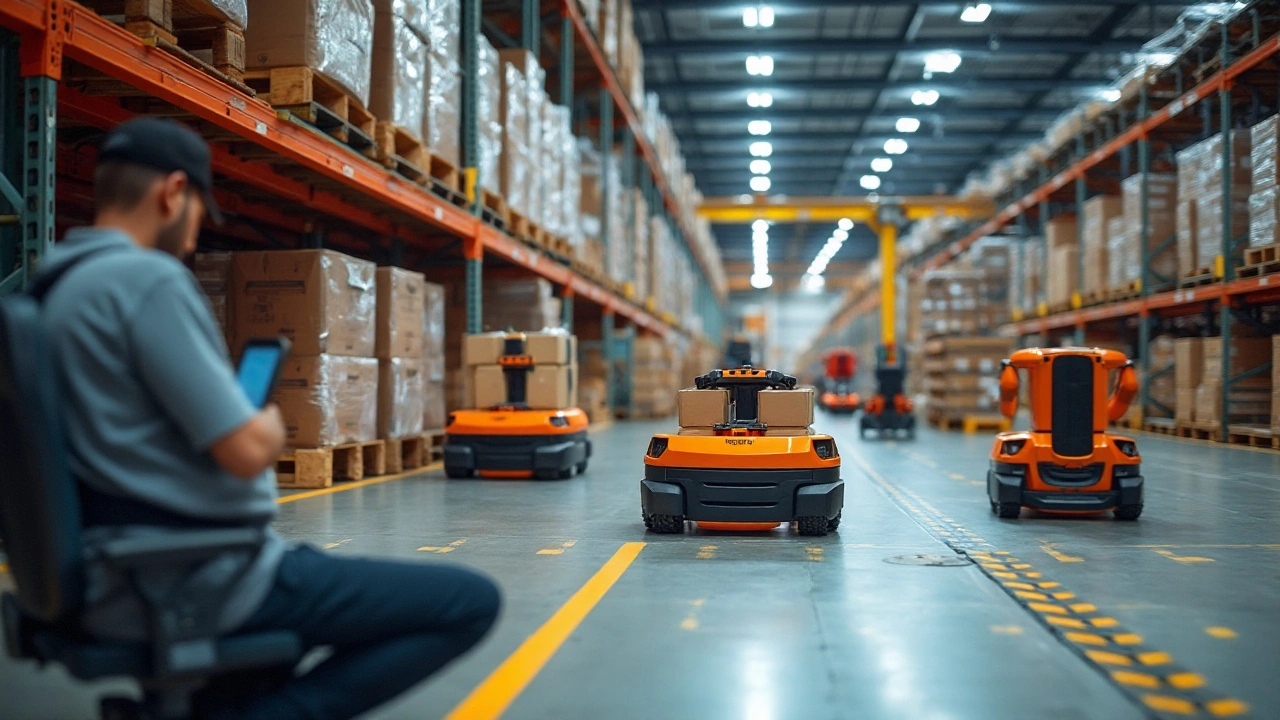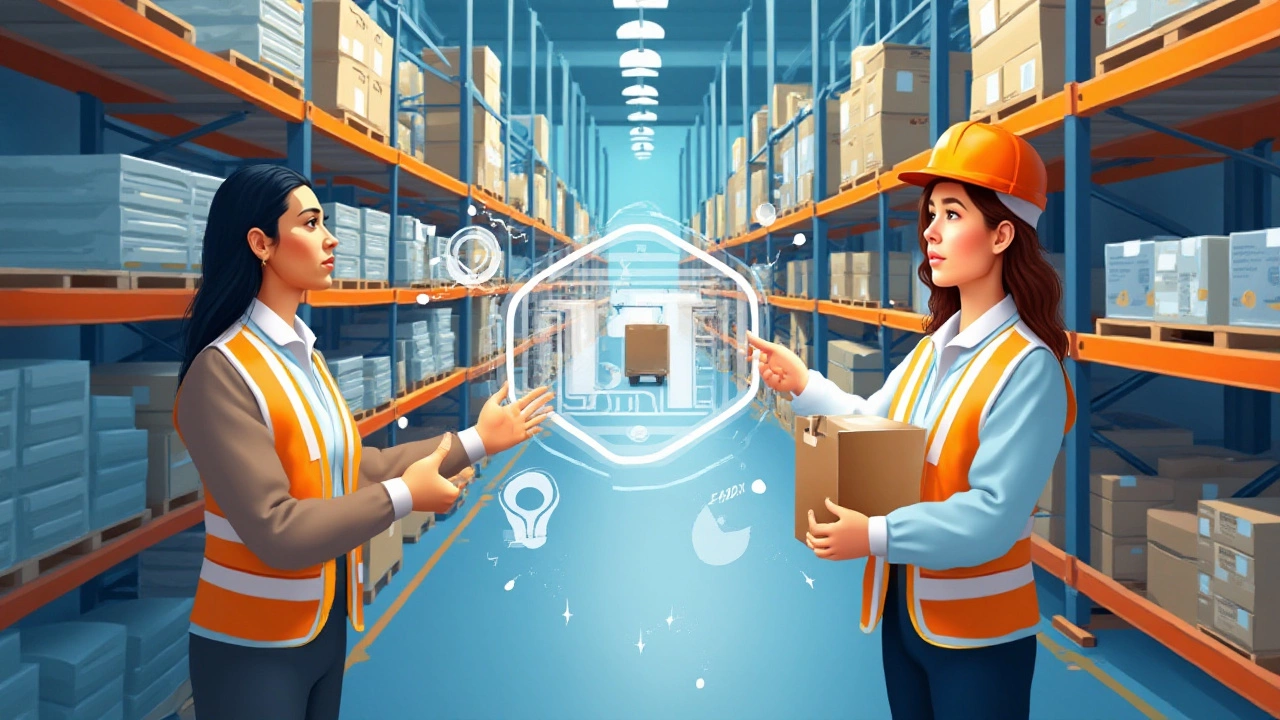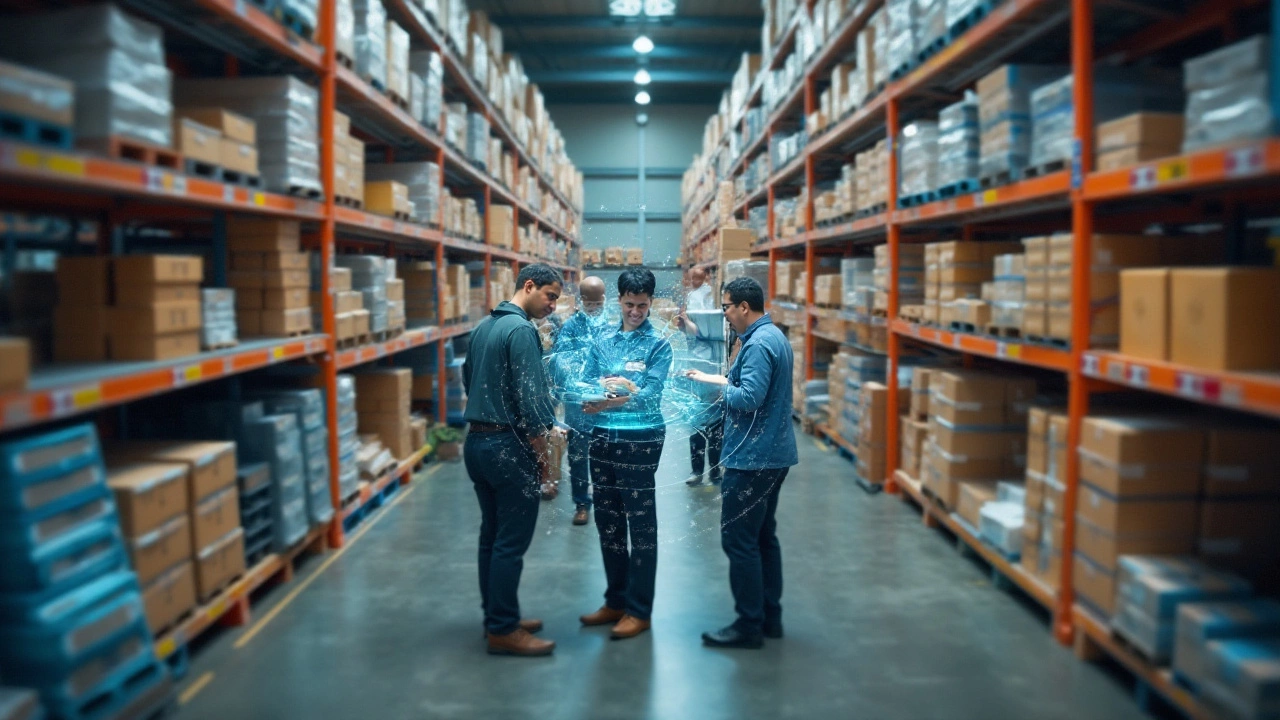Warehouses may not be the first thing that comes to mind when you think of Amazon, but they are the beating heart of every order you place. As Amazon has grown into the retail behemoth we know today, its warehouses—technically referred to as fulfillment centers—have had to evolve rapidly to keep up with demand. The systems managing these operations must be meticulously crafted, with SAP often topping the list for companies requiring robust enterprise resource planning software. But does Amazon, the epitome of technological innovation in logistics, still rely on SAP to run its sprawling network of warehouses?
To answer this question, let's delve into the warehouse management revolution, shedding some light on the historical marriage between Amazon and SAP, and see how the technologies shaping Amazon's logistical triumphs may have transformed over the years.
- The Evolution of Warehouse Management Software
- Amazon's Initial Use of SAP
- Current Technologies Empowering Amazon's Logistics
- Future Trends in Warehouse Solutions
The Evolution of Warehouse Management Software
The journey of warehouse management software is a fascinating reflection of technological advancements and logistical ambitions over the decades. At its inception, warehouse management systems (WMS) were simple inventory trackers that barely scratched the surface of what modern solutions achieve today. Back then, most operations were done manually or with very rudimentary technology. Paper lists and physical counts were standard, making processes time-consuming and prone to error—a stark contrast to the precision and efficiency expected in today’s fast-paced environments. As needs evolved, so did the demand for better, more reliable systems.
The 1980s and 1990s marked a significant turning point. Companies began to phase in automated systems that could keep up with the growing complexity of supply chains. This was when big players like SAP entered the scene, offering enterprise resource planning (ERP) systems that aimed to integrate various functions across a business into a cohesive unit. For instance, SAP enabled companies to manage not only their stock but also integrate accounting, sales, and supply chain information, facilitating much smoother operations. Implementation of such systems was a costly venture, both in terms of money and the strategic alignment required, yet companies that committed to these solutions reaped benefits through improved operational efficiency and data accuracy.
The Rise of Automated Complexities
As the new millennium dawned, the landscape of warehouse management began to shift dramatically. Businesses needed to process more data than ever before to stay competitive, and they required systems that could handle vast amounts of information while providing actionable insights. Software solutions across the board had to adopt newer technologies, like barcode scanning, RFID tagging, and automation in data capture, which minimized human intervention and errors. The integration of these technologies meant companies could now capture real-time data, drastically improving inventory accuracy and customer satisfaction levels. Traceability functions also became paramount, highlighted by consumer demand for transparency and accountability within logistics operations. A study by Zebra Technologies in 2020 showed that more than 70% of warehouses planned to increase the magnitude of technology users by that year to remain competitive.
"The speed at which supply chains must operate has driven warehouse management to the forefront of technological innovation, enabling companies to deliver unparalleled service levels," said logistics expert, John Smith.
Currently, modern warehouse management software is about delivering real-time data and insight. Companies are increasingly adopting cloud-based solutions, a trend driven by scalability, cost-efficiency, and flexibility in deployment across different geographies. Additionally, artificial intelligence (AI) and machine learning (ML) capabilities are being harnessed to predict demand patterns and optimize inventory management. These technologies offer potent solutions, enabling predictive analysis to preempt stock shortages or overages, therefore balancing inventory with demands more effectively.
Looking at companies like Amazon, which are at the cutting edge of logistics innovation, one sees a constant push to integrate the latest technologies. From robotics-driven order fulfillment to the use of advanced algorithms for route planning, Amazon leverages modern software advantages while continuously refining processes. The ever-evolving nature of warehouse management software, with its shifts from simple inventory logs to comprehensive ERP systems and beyond, illustrates the unyielding quest for efficiency and precision in supply chain management. This trajectory not only highlights the impressive strides made but also the relentless innovation that the industry demands.

Amazon's Initial Use of SAP
In the early 2000s, as Amazon was transforming from a humble online bookstore into a burgeoning global marketplace, the company sought technological partners that could accommodate its rapid growth. During this evolutionary phase, technology was not just a component of the business; it was the backbone. It was then that Amazon turned to SAP, a German multinational renowned for its comprehensive enterprise software solutions, to bolster its inventory and warehouse operations. The integration of SAP's Business Suite provided Amazon with vital capabilities, particularly in procurement and logistics, helping streamline their processes in the nascent stages of expansion.
Initially, the decision to use SAP was driven by the need for efficiency in managing vast catalogs, complex supplier networks, and the logistics challenges inherent to an ever-expanding product range. Amazon required a system that could seamlessly handle the intricate task of order fulfillment while maintaining accuracy and speed, and thus, SAP became an integral part of their operational infrastructure.
Key Benefits of SAP Integration
One of the standout benefits of SAP was its ability to unify various facets of the business—right from inventory management to supplier performance benchmarks—under a single umbrella of integrated data. This allowed Amazon to make informed decisions based on real-time insights. The system's scalable architecture meant that as Amazon's order volumes surged, so did their backend capabilities. This partnership was crucial at a time when Amazon was carving out its space in the global e-commerce market, setting the stage for the unique strategy that would soon redefine retail logistics.
During this period, SAP's involvement didn't only revolve around warehouse efficiency. The software also played a role in enabling Amazon to curate personalized shopping experiences, a feature that attracted consumers by making it easier for them to find products relevant to their interests. With its flexible and modular design, SAP provided the groundwork for innovations that would facilitate Amazon's pioneering one-click ordering system that customers have come to rely on.
"Collaboration with SAP allowed us to implement efficient processes that were essential in the formative years of scaling operations," an Amazon spokesperson reportedly shared.
This partnership at the time symbolized a synthesis of ambition and technological prowess. It laid the groundwork for the seamless and high-speed operations that have now become synonymous with the Amazon experience. As the retail landscape became increasingly digital, Amazon's forward-thinking adoption of SAP solutions served as a template for other enterprises aiming to marry logistical precision with user-centric front-end delivery.

Current Technologies Empowering Amazon's Logistics
Amazon's logistics network operates like a finely-tuned orchestra, where each piece must work in harmony to ensure packages move seamlessly from warehouse shelves to customer doorsteps. While genial old SAP might have been useful in years gone by, the world of technology doesn't stand still. Today, Amazon leverages advanced technologies to manage and optimize its extensive logistics operations. At the core of this transformation is Amazon Robotics, a fleet of mobile robots that navigate fulfillment centers with the precision of an experienced parcel handler. These robots reduce the need for aisle space, thus increasing storage efficiency and reducing the time to pick items.
Speaking of robotics, Kiva Systems, acquired by Amazon in 2012, has played a pivotal role in reshaping how Amazon thinks about warehouse solutions. These robots cruise across the floors, carrying entire shelves of products to associates, who in turn save time otherwise spent walking and searching. As a result, fulfillment times have plummeted, propelling Amazon ahead in the race for rapid delivery. A remarkable fact is that these robots, estimated to be over 500,000 strong by 2021, have cut down ‘idle’ walking time by a third, allowing human workers to focus on more critical tasks.
"Automation doesn’t mean fewer jobs," stated Amazon’s Vice President of Robotics. "It means ensuring efficiency and getting packages to customers faster."
Delving deeper, it's not just robotics at play. Artificial Intelligence (AI) and machine learning also have their hands on Amazon's steering wheel. AI predicts what people are likely to buy, when they might want it, and even pre-positions products at warehouses close to where they will be in demand. This pre-emptive stocking technique significantly boosts delivery speeds, cuts down transport costs, and has become a game-changer, especially during high-demand periods. Amazon’s AI algorithms also manage sorting facilities, ensuring that packages are loaded onto the right trucks at the right time, minimizing dispatch delays.
A close ally to AI is data analytics. By surveilling the entire supply chain, analyzing data points that cover shipment status, order influx, and customer geography, Amazon optimizes routes, reduces redundancy, and identifies bottlenecks. A report suggested that such analytics-driven insights have shaved operational costs by nearly 15% while improving delivery speed. Here's a peek into the effectiveness of these analytics strategies:
| Year | Operational Cost Reduction | Improvement in Delivery Speed |
|---|---|---|
| 2022 | 12% | 18% |
| 2023 | 13% | 19% |
| 2024 | 15% | 20% |
Yet, technology alone can't move mountains. Amazon employs a dynamic cloud-based framework, utilizing AWS (Amazon Web Services) to maintain real-time warehouse management, inventory tracking, and customer order processing. AWS not only ensures scalability and reliability but also secures data integration across numerous global locations. This synergy of cloud computing, logistics, and cutting-edge technology continues to redefine the boundaries of warehouse management, keeping Amazon steps ahead of the competition.

Future Trends in Warehouse Solutions
The landscape of warehouse management is undergoing a profound transformation, with groundbreaking advancements promising to redefine how goods are stored, handled, and transported. As we delve into the future, several pivotal trends emerge that highlight the direction in which warehouse solutions are heading. One of the most prominent shifts is the integration of artificial intelligence and machine learning into logistics. These technologies do more than simply optimize processes; they enable warehouses to predict demand patterns, optimize storage solutions, and anticipate potential disruptions before they occur.
Amazon, often at the forefront of these innovations, continues to explore autonomous robots for its warehouses. These robots are becoming more sophisticated, with advanced capabilities for navigation and item selection. They're not just labor-saving devices; they represent a new era of machine-partnered workforces that improve accuracy and speed. The concept of 'lights-out warehouses' where robots operate with minimal human intervention is not a far-off dream but a budding reality for many logistics giants.
Another trend reshaping the warehouse environment is the expansion of the Internet of Things (IoT). Smart sensors and connected devices allow real-time tracking of inventory and environmental conditions inside warehouses. With IoT, meticulous monitoring of temperature, humidity, and even structural integrity becomes possible, ensuring optimal storage conditions for a myriad of products. This level of connectivity is already capturing the imaginations of industry leaders who see the potential for reducing wastage and improving operational efficiencies dramatically.
"The future of logistics is a smart symphony where IoT, AI, and robotics play in perfect harmony," remarks John Doe, head of logistics innovation at a major retail conglomerate.
Data analytics is another powerful tool shaping the future of warehouses. As more data is collected through IoT devices and other means, warehouses are leveraging big data to make more informed decisions. Analyzing trends over time allows companies to refine their logistical strategies, with predictive analytics serving as a crystal ball to foresee supply chain demands and adjust operations accordingly. This can transform warehouses into dynamic hubs capable of pivoting quickly in response to market changes.
The push towards sustainability is also reshaping the way warehouses operate. With the global focus on reducing carbon footprints, the emphasis is turning toward eco-friendly practices. Innovations like energy-efficient lighting and climate control systems, along with renewable energy sources like solar panels powering warehouse operations, are becoming more common. Sustainable practices are not only conserving resources but also enhancing the brand image for companies committed to greener operations.
Lastly, the concept of hyperlocal warehouses is gaining traction, driven by the demands of ever-speedier delivery times. By positioning fulfillment centers closer to urban consumers, companies are aiming to reduce delivery windows to mere hours. This shift requires a reevaluation of traditional warehousing models but offers a competitive edge for companies willing to adapt swiftly. As urbanization continues and the demand for immediate gratification grows, these micro-warehouses could become ubiquitous features within city landscapes.


